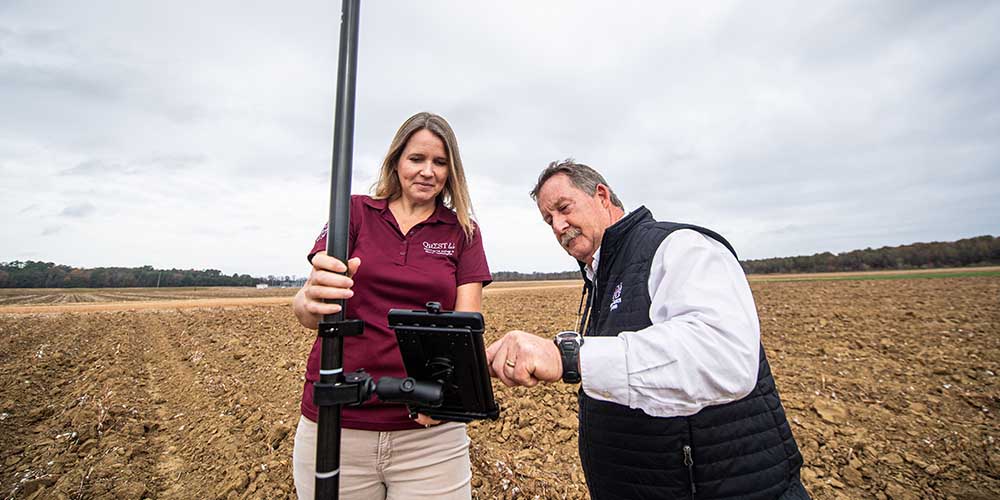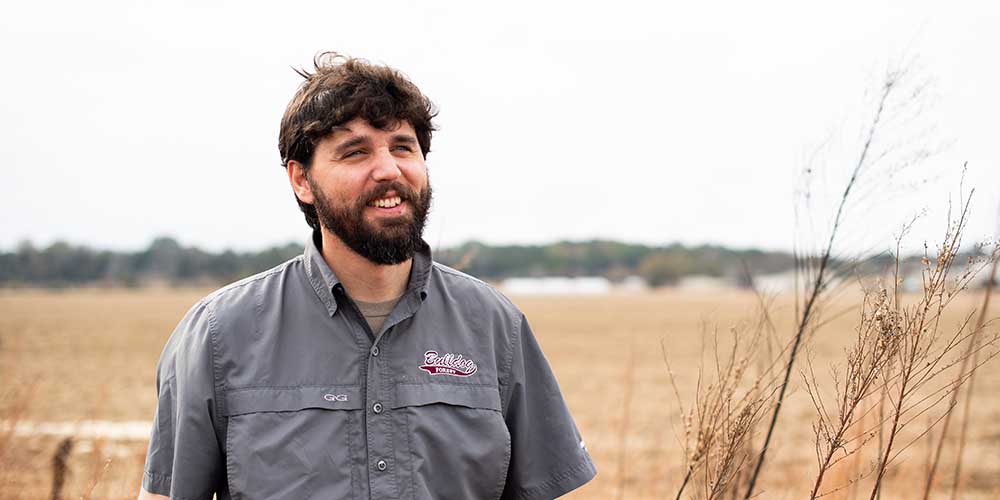Related Stories
Habitat Stories

Working Landscapes
Dr. Ray Iglay, along with other scientists in the Forest and Wildlife Research Center, researched practical ways for landowners of pine landscapes to increase biodiversity in working landscapes. The team researched treated intensively managed pine stands in Mississippi to determine if certain management practices could increase different species of wildlife and plants in the forest. They researched what kind of mid-rotation management would improve biodiversity with four different treatments that were applied to thinned pine stands in the 25-acre experimental units. The results showed that each treatment produced beneficial conditions, and the treatments offered multiple management options that all could be used on a landscape scale to create a forest that supports diversity of birds and sustainable forestry.
2018

Strategic Conservation
Researchers at Mississippi State's Forest and Wildlife Research Center (FWRC) are developing a web-based tool called the CRP Menu to help farmers explore conservation options in the Farm Bill's Conservation Reserve Program (CRP). The tool allows farmers to create and compare conservation plans based on their goals and eligibility, aiming to simplify the process and provide personalized information. Building on the Strategic Conservation Assessment (SCA) tool, it will be adaptable for different regions and conservation issues. The team is using a social science approach, gathering input from farmers and stakeholders across 12 counties in eight states to shape the tool. After testing in these areas, the goal is to expand it nationally, improving farmer engagement, reducing barriers to participation, and enhancing conservation outcomes.
2023

Light a Fire, Save a Bird
Mississippi State's Forest and Wildlife Research Center (FWRC) is studying the impact of prescribed fire on the Bachman's sparrow, a ground-nesting bird whose population has declined due to habitat loss and fire exclusion. Dr. Mark McConnell leads the research, focusing on whether burning during the growing season (as opposed to the traditional dormant season) can help restore the bird's habitat. The study, conducted across 1,800 acres with 15 burn plots, found that a mix of both dormant and growing season burns benefits the sparrow. The team conducted bird surveys and vegetation assessments before and after the burns to understand how fire timing influences ground cover and sparrow populations. Dr. Kristine Evans contributed expertise on the bird's behavior and habitat needs.
The goal is to determine the best fire management strategies to support healthy Bachman's sparrow populations and improve conservation efforts for this species.